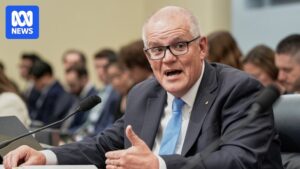
As automotive manufacturers in Australia brace for the implementation of the Australian Government’s New Vehicle Efficiency Standard (NVES), Subaru has announced a consumer-driven approach to its powertrain offerings. The NVES, aimed at reducing CO2 emissions across vehicle lineups, officially commenced on January 1, 2025. Manufacturers face monetary penalties of $100 per gram per kilometer of CO2 for vehicles exceeding the annual average carbon emissions target.
Speaking at the Australasian launch of the sixth-generation Forester, Subaru Australia General Manager Scott Lawrence emphasized the company’s commitment to customer preferences. “First and foremost, we support initiatives to reduce CO2, and we support any actions in that space,” Lawrence stated, highlighting Subaru’s strategy to let consumer demand guide the introduction of more efficient vehicles.
Subaru’s Hybrid and Electric Strategy
Subaru’s response to the NVES includes the introduction of the Forester Strong Hybrid, the brand’s first robust hybrid in the Australian market. Developed with Toyota’s technology, this hybrid system promises enhanced performance and fuel economy compared to its predecessor. Despite a slow start, with only one electric vehicle (EV) available—the Solterra SUV—Subaru aims to expand its EV offerings.
The Solterra, developed in partnership with Toyota and sharing its platform with Toyota’s bZ4X, has seen sluggish sales, with a 56.5% decrease year-to-date and only 121 units delivered in 2025. Meanwhile, Subaru’s lineup remains largely petrol-dominated, from the economical Impreza to the turbocharged WRX, despite the availability of mild-hybrid e-Boxer versions overseas.
Potential Market Expansions
In addition to the Forester, the Crosstrek e-Boxer hybrid has been available in Australia since 2023. However, it falls short of Toyota’s hybrids in terms of fuel efficiency. Subaru offers a Crosstrek S:HEV in Japan with a similar powertrain to the new Forester, which could potentially enter the Australian market.
Subaru has also unveiled the Trailseeker EV in the United States and the Uncharted EV, though neither has been confirmed for Australia. These models, like the Solterra, are developed alongside Toyota models—the bZ4X Touring and C-HR+, respectively.
Consumer-Driven Approach
Subaru’s strategy hinges on consumer choice. “Ultimately though, consumers will choose. What we see playing out is we’re going to continue to offer [internal combustion] for as long as it’s possible, again because consumers will choose,” Lawrence explained. Subaru plans to offer a range of powertrains, including Strong Hybrid and EV options, aligning with Subaru Corporation’s ambition to expand its EV portfolio.
“I need to reiterate – we will also be reactive to what consumers want. They’re the ultimate decider when it comes to powertrain choice and powertrain demand,” Lawrence added.
Challenges and Future Outlook
The NVES requires manufacturers to meet a decreasing average carbon emissions target, starting at 141g/km for passenger vehicles and dropping to 58g/km by 2029. Subaru faces challenges in offsetting emissions from its popular models. For instance, a petrol Forester emits 180g/km of CO2, while the Strong Hybrid version emits 140g/km. The Impreza and non-turbo Outback produce 170g/km and 168g/km, respectively, with the manual WRX at 225g/km.
These figures highlight the difficulty Subaru faces in meeting NVES targets, especially with the current low demand for the Solterra and uncertain plans for the Trailseeker and Uncharted in Australia. Despite these challenges, Lawrence expressed confidence in Subaru’s ability to adapt, stating, “no,” when asked if the company was concerned about meeting NVES targets.
As Subaru navigates these regulatory changes, the brand’s focus remains on aligning its offerings with consumer preferences while gradually integrating more efficient powertrains into its lineup. The coming years will test Subaru’s ability to balance regulatory compliance with consumer demand in the evolving automotive landscape.






